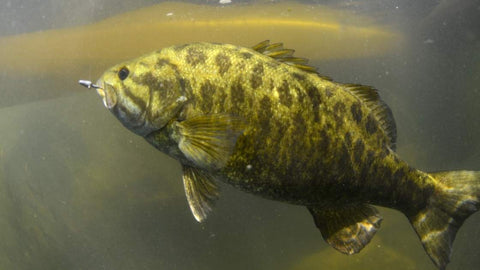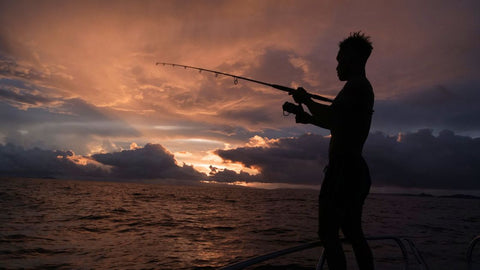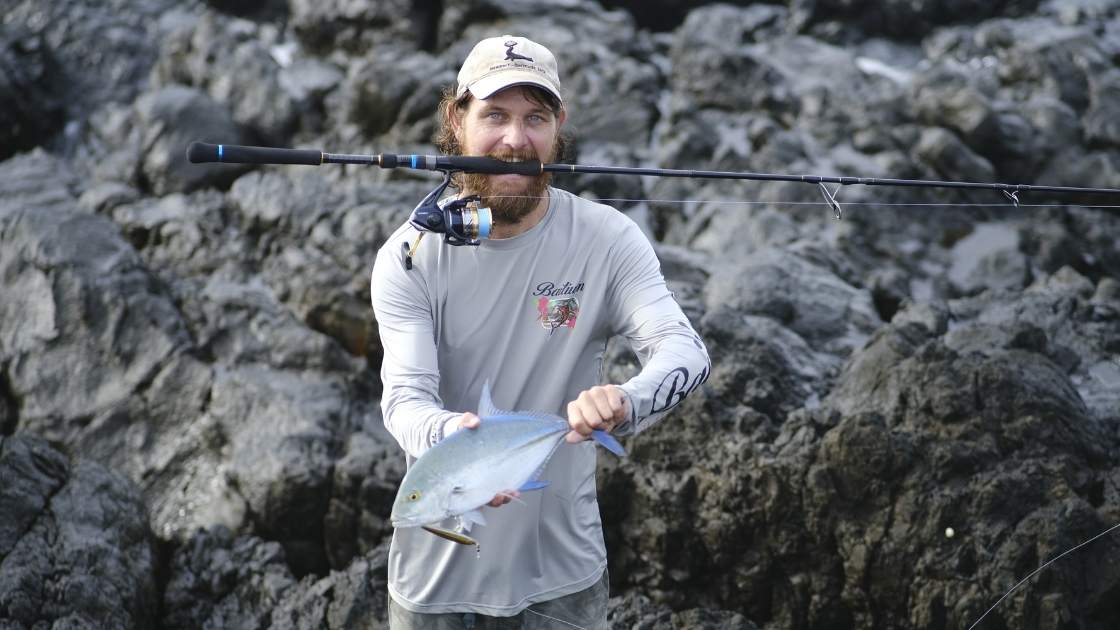Key takeaways
- Cold fronts seriously shake up the fishing scene. Fish are super active before the front rolls in, gobbling up bait like there's no tomorrow. Perfect time to cast your line and make a killer catch.
- Once the cold air settles, the fish turn lazy. They stick close to cover, move less, and are tricky to catch.
- Largemouth bass, smallmouth bass, redfish, and spotted seatrout are among the fish most affected by cold fronts.
If you're like me, you've probably noticed that some days the fish just seem to be biting more than others. Well, it's no coincidence. The weather plays a massive role in our fishing adventures, and one of the most influential factors is the arrival of a cold front.
A cold front is basically the boundary where a mass of cooler, drier air invades an area of warmer, moist air. This often happens behind what we call an extratropical cyclone.
Table of Contents
As the cooler, drier air moves in, it pushes up the warmer, moister air, often creating clouds with a whole lot of vertical stretch. If there's enough moisture in the air, this is when you'll see showers or even thunderstorms kick up.
You'll notice a sudden drop in temperature when a cold front passes through—sometimes as much as 54°F. You can't miss the wind, too; it's like a quick punch of strong gusts. This is more common during transitional seasons like spring and fall, but don't be surprised if it happens smack dab in the middle of winter too.
Check your weather map and you'll spot a cold front by its blue line adorned with blue triangles pointing in the direction the cooler air is moving. These fronts can advance pretty fast, pushing up the warmer air and sometimes causing severe weather like thunderstorms or even tornadoes. And here's the kicker: right after the cold front moves through, precipitation tends to stop just like that.
Stick around as we explore the ins and outs of this phenomenon and offer up some strategies to keep your fishing game strong, no matter what the skies have in store.
How does a cold front affect fishing?
The clash between warm and cold air during a cold front leads to all sorts of crazy weather shifts like, as I mentioned, strong winds and rain. Fish pick up on these changes quicker than a bass on a worm, often altering their behavior substantially.

Knowing how fish react to a cold front can make or break your fishing trip. Fish will often feed heavily before a cold front passes through. Once the colder air settles in, they can become less active, stick closer to cover, and become a real challenge to hook.
Ignoring the influence of a cold front on fishing can cost you in more ways than one. You'll find yourself casting lines aimlessly, wasting precious time and bait with little to show for it. Missing out on a great catch is frustrating enough, but the emotional toll can't be overlooked either. Morale takes a hit, turning what should be a relaxing or exciting experience into a day of disappointments.
But don't despair; with a keen understanding of these patterns, you can still make a cold front work to your advantage.
What happens before, during, and after a cold front?
Understanding how a cold front impacts fishing is key for any angler looking to make the most of their time on the water. Prior to the front, it's an angler's dream: fish become more active and are generally easier to catch. They feed heavily, sensing the impending weather shift. This is your golden window to reel in a bountiful catch. But don't get too comfortable, because this behavior changes dramatically once the cold front arrives.

During the front, water temperatures can take a nosedive, and this is where the game gets tricky. Fish—being cold-blooded—adjust their metabolic rates according to water temperatures. This metabolic slowdown makes them less active and, yes, less hungry. So, your bait that seemed irresistible a day ago may now go unnoticed. Species like carp and smallmouth bass, which thrive in warmer waters, are particularly less inclined to bite.
After the front passes, don't expect an immediate return to easy fishing. The sky might be clear and the winds calm, but the fish are likely still in a sluggish state. They often seek refuge in dense underwater structures, making them harder to hook.
What fish are generally affected by cold fronts?
Largemouth bass are notorious for their sensitivity to these temperature changes. They'll abandon their usual shallow water haunts for the warmer sanctuary of deeper zones. Their cousins, the smallmouth bass, follow suit, also becoming lethargic and elusive. Carp, another warm-water species, also take a hit in activity levels. They seem to vanish, but in reality, they're hunkered down in deeper water, far less interested in your bait than on a warm, sunny day.

Redfish and spotted seatrout are no different. Once a cold front passes, their slowed metabolic rates mean they're not actively searching for food. But the stakes are higher with these species. Further, cold spells are more than just inconvenient; they can be life-threatening for redfish and spotted seatrout.
Strategies for cold front fishing
The silver lining is, with some thoughtful adjustments to your approach before, during, and after a cold front, you can still succeed in catching fish.
Remember what I mentioned before about fish being in a feeding frenzy right before a front hits? This is your chance to go big. Use aggressive lures and fish at various depths to capitalize on their heightened activity. Take note, though: this feeding spree won't last long.
As the cold front sets in and water temperatures plummet, it's time to change gears. You can expect fish to be less eager to chase down a meal, so consider switching to live bait like minnows, worms, or leeches. These are more tempting for fish and up your odds of getting a bite. During this phase, take it slow. Vertical fishing near structures or covers can be effective, especially with lures like lipless rattlebaits, plastic worms, or spinnerbaits, which work well in colder waters. You'll also want to focus on areas like riprap, where fish often gather during sudden temperature drops.

Post-front conditions offer a fresh set of challenges and opportunities. Water temperature plays a huge role, so your best bet is to target areas that are likely to be warmer, such as spots protected from cold winds or locations receiving ample sunlight. Such areas often hold large structures like wood and rocks that retain heat, attracting lethargic fish seeking warmth. Tailoring your fishing time to late morning or early afternoon can also be beneficial since waters get slightly warmer as the day progresses.
Another critical aspect during this phase is to not rush through your fishing spots. I like making repeated casts to the same area, as fish may not bite immediately but might give in after seeing the bait multiple times.
Conclusion
Cold fronts dramatically change the fishing game, making fish active before arrival and sluggish after. These predictable behavior changes spell opportunity for the observant angler. It's all about being flexible in your strategy—switching baits, altering your casting style, or even focusing on different water depths—to sync up with the fishes' mood swings.
By understanding the intricacies of how cold fronts stir the pot, from the meteorological cues down to the temperature shifts, you can not only maneuver these challenges but turn them into fishing triumphs. So next time you see that blue line with triangles on the weather map, don't see it as a hindrance. Instead, view it as an invitation to a more exciting and rewarding fishing experience!
Don’t miss our popular post 10 Fishing Superstitions: Silly Ideas or Shortcuts to Success? and check out the Anglers Who Love Baitium!
Looking for a fishing shirt for your next angling adventure? Check out these bestsellers!
MOST READ NEWS:
How To Use Your Fishing Records to Catch More Fish
Track your fishing trips, analyze patterns, and refine your techniques with a fishing log to catch more fish on every outing!
Solo Fishing Safety Tips: Stay Safe and Enjoy the Outdoors
Learn essential solo fishing safety tips: gear checklist, boat safety, emergency preparedness, weather monitoring & fishing location scouting. Stay safe on the water.
Secrets to Winter Fly Fishing Success
Master winter fly fishing with expert tips on trout behavior, essential gear, and proven techniques. Learn the secrets to catching more fish in cold weather.
How Cold Water Changes Fish Behavior: Insights for Anglers
Explore how cold water affects fish behavior and fishing techniques, enhancing your angling success and strategy.
Is Tech Making Fishing Too Easy? Exploring Forward-Facing Sonar (FFS)
Learn about forward facing sonar in fishing - what it is, how it works, rules for tournaments, ethics, and tips for finding fish with this game-changing technology.
Plan Your Best Fishing Trip Yet this 2025: A Complete Guide
Plan your fishing trip this off-season. Learn to choose destinations, prep gear, pick bait, and trust Baitium for expert tools and tips!
15 Fishing Resolutions for 2025: Set Yourself Up for Success
Discover 15 essential fishing resolutions for 2025: tackle organization, gear maintenance, angling techniques, conservation tips, tournament prep, and fishing safety guidelines.


